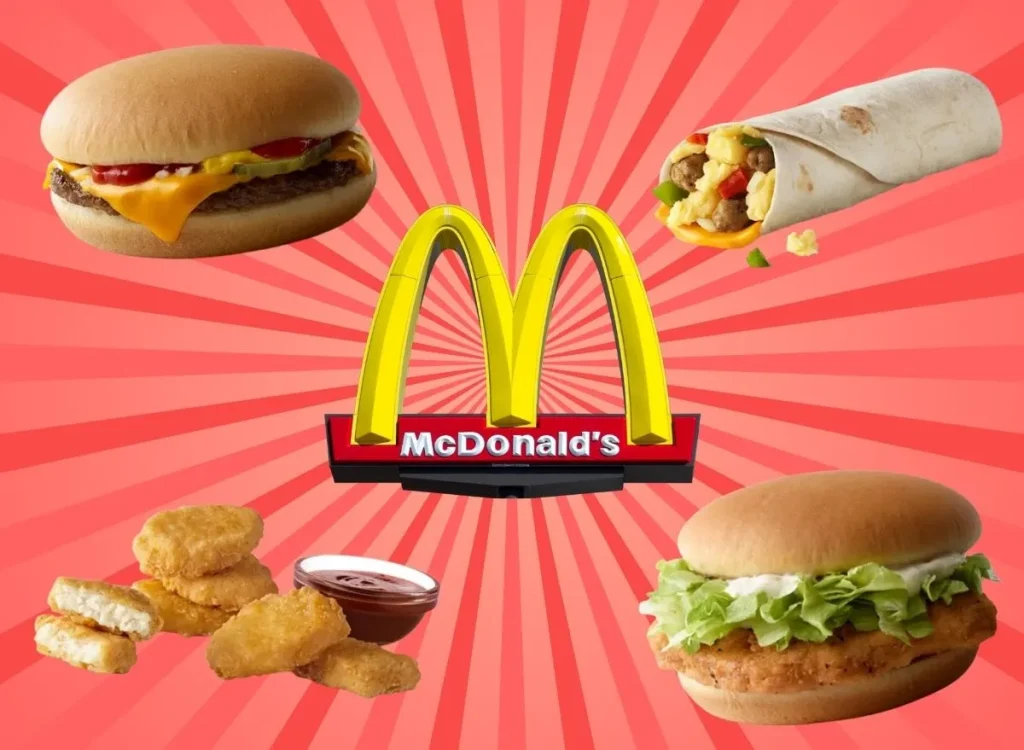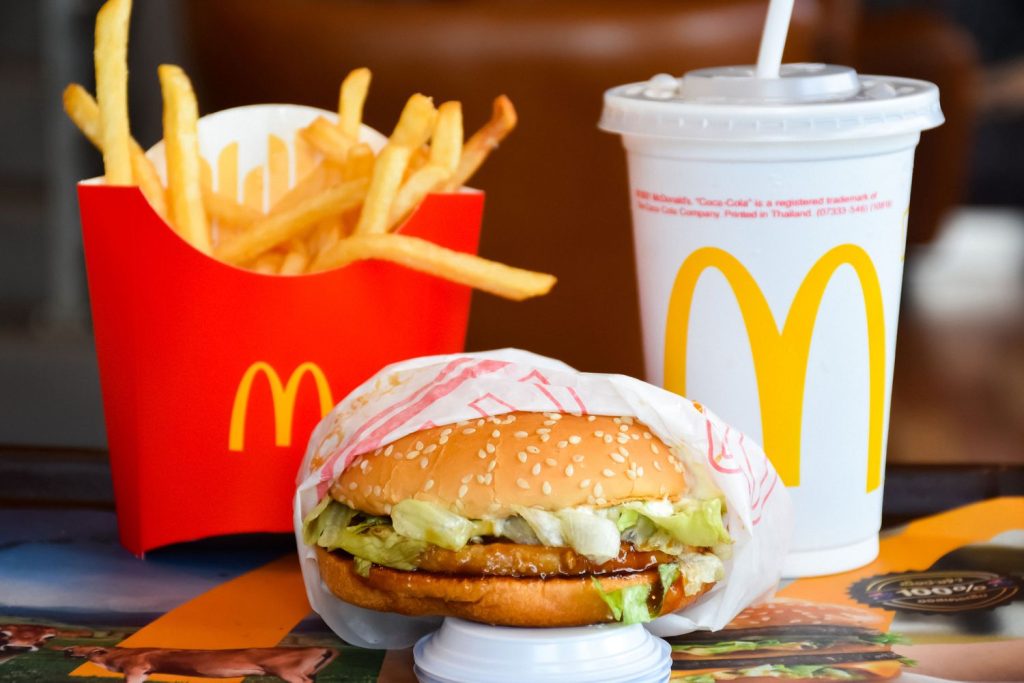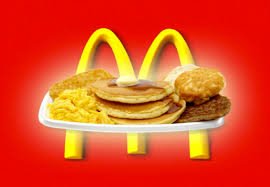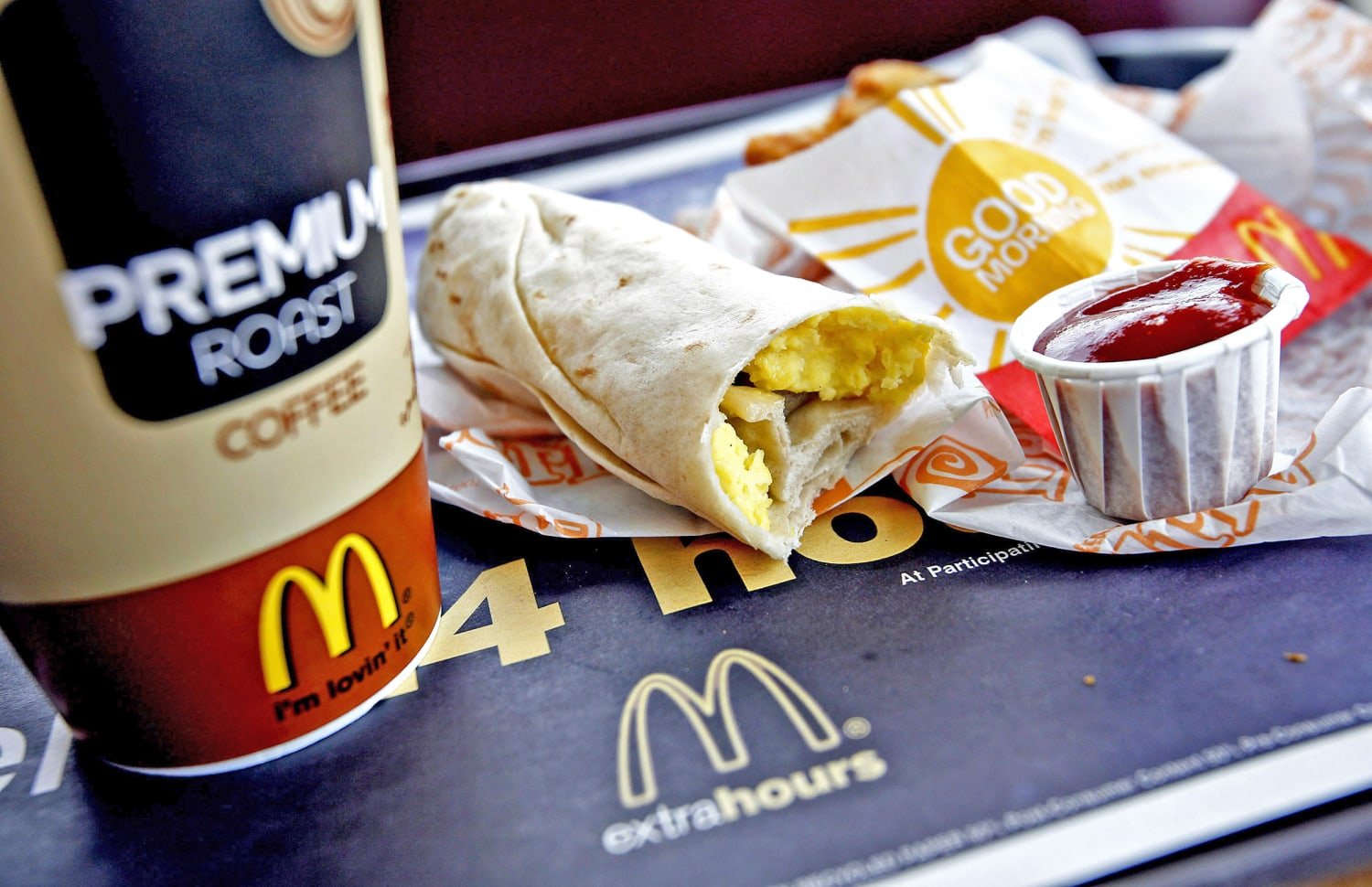Have You Ever Wondered About McDonald’s Calorie Count? As McDonald’s rolls out its calorie count initiative across all UK branches, the impact on customers’ eating habits is becoming a hot topic of discussion. With the calorific values prominently displayed on menu boards, patrons are faced with a stark reminder of the energy content in their favorite fast-food items.
While some customers, like Fraser Reid, appreciate its transparency and clarity in making informed choices, others still need to be convinced about whether this initiative will significantly alter their eating behaviors. Despite the government’s push for healthier eating through more transparent labeling, studies suggest that many diners are unlikely to change their orders, as they are already well aware of the indulgent nature of fast food.
Table of Contents
Calorie Count In Some Menu Items:
| Menu Item | Calories |
| Big Mac | 550 |
| Quarter Pounder | 780 |
| McChicken | 400 |
| Medium Fries | 340 |
| Chicken McNuggets (10 pcs) | 440 |
| Egg McMuffin | 300 |
| Vanilla Cone | 200 |
| McFlurry (Oreo) | 510 |
The New Calorie Labeling Initiative

The new calorie labeling initiative by McDonald’s aims to offer greater transparency. With McDonalds Calorie Count now prominently displayed, customers can easily see the energy content of their meals. This move is part of a broader public health effort spearheaded by the government. McDonald’s has committed to showcasing the calorific values of all items, including burgers, fries, and condiments.
Transitioning from Cannon Street to the rest of the UK, the initiative seeks to nudge customers toward healthier choices. Food chains like KFC, Burger King, and Pizza Hut joined this effort. As more high-street outlets adopt these labels, the initiative could cover over 5,000 locations. This sweeping change reflects a growing demand for nutritional transparency in the fast-food industry.
Initial Customer Reactions at Cannon Street
Initial customer reactions at Cannon Street were a mix of surprise and curiosity. Fraser Reid, for instance, felt the McDonalds Calorie Count offered valuable clarity. However, his initial relief at a lower-calorie burger quickly turned into dismay upon realizing the high calories in his chocolate milkshake. Similarly, Lola Aladeshelu, while recognizing the initiative’s importance, was skeptical about its impact. She believes most customers already know they are indulging in junk food.
On the other hand, Leanne Morris struggled with the small print on the menu board, finding it hard to make a healthier choice. Reactions varied, but many customers appreciated the transparency even if it didn’t drastically change their orders. This early feedback highlights the complexities of influencing eating habits through calorie information alone.
The Government’s Role and Recommendations
- Public Health Responsibility Deal:
The UK government’s “responsibility deal” aims to engage food industry giants like McDonald’s in tackling public health challenges, including obesity. This voluntary pledge encourages companies to promote healthier eating habits.
- Caloric Transparency:
The government hopes to arm consumers with information that could guide healthier food choices by advocating for clear labeling of calorie counts. This aligns with broader public health strategies focused on reducing diet-related health issues.
- Recommended Daily Intake:
The Department of Health advises a daily calorie intake of 1,940 calories for women and 2,550 for men. These guidelines serve as benchmarks for consumers to understand better how individual food items fit into their overall diet.
- Collaboration with Food Chains:
Major fast-food chains like KFC, Burger King, and Pizza Hut are joining McDonald’s in this initiative, indicating a collaborative effort to enhance nutritional transparency across the industry. This collective action aims to make healthier options more accessible to the public.
- Nudging Healthier Choices:
The government’s strategy includes “nudging” techniques to subtly influence consumer behavior toward healthier options. While initial reactions are mixed, the long-term goal is to create an environment where making healthier food choices becomes easier and more intuitive.
Menu Items and Their Caloric Ranges

- Burgers:
McDonald’s offers a range of burgers with varying calorie counts. For instance, a Big Mac contains around 550 calories, while a simpler hamburger has approximately 250 calories. Specialty items, like the Double Quarter Pounder with Cheese, can exceed 1,000 calories.
- Fries:
French fries are a staple at McDonald’s, with calorie counts depending on the size. A medium serving of fries typically contains about 340 calories, while a large serving can reach 500 calories. Even a tiny portion clocks in at roughly 230 calories.
- Salads:
McDonald’s salads can be a lighter option, depending on the ingredients and dressings. A basic Garden Side Salad has only ten calories, but more elaborate options like the Grilled Chicken & Bacon Salad can go up to 325 calories. Adding dressings can significantly increase the calorie count.
- Breakfast Items:
Breakfast at McDonald’s ranges from lighter to more indulgent options. An Egg McMuffin contains about 300 calories, whereas a Sausage McMuffin with an Egg can have up to 450 calories. Pancake breakfasts and other hearty meals can exceed 600 calories.
- Desserts:
Desserts offer a sweet end to a meal with a wide range of calorie counts. A small McFlurry contains around 340 calories, but larger sizes or more elaborate desserts can exceed 500 calories. More straightforward treats like apple slices offer a lighter alternative at around 15 calories.
The Broader Rollout Across the UK
As McDonald’s expands its McDonalds Calorie Count initiative beyond Cannon Street, more UK locations are joining the effort. This widespread rollout is part of a national push for nutritional transparency in fast-food chains. Starting this week, all 1,200 McDonald’s branches will feature calorie counts on their menu boards. Customers can now see the caloric content of everything, from Big Macs to simple condiments.
The initiative aims to help patrons make informed choices by providing more precise nutritional information.Interestingly, this move coincides with other food giants like KFC, Burger King, and Pizza Hut adopting similar practices. Consequently, over 5,000 high-street outlets will display calorie information by year-end. This growing trend signifies a shift toward greater accountability in the food industry. With such extensive coverage, the impact on public eating habits remains to be seen.
Customer Perspectives on Calorie Information
- Surprise and Clarity:
Fraser Reid felt a mix of wonder and appreciation for the clarity provided by the McDonalds Calorie Count. Seeing the numbers helped him understand his meal choices better, though it didn’t deter his cravings entirely.
- Skepticism About Impact:
Lola Aladeshelu acknowledged the importance of calorie information but doubted its effectiveness. She believed most customers knew they were indulging in junk food and wouldn’t change their habits based on the labels.
- Difficulty Reading Labels:
Leanne Morris found the small print on the menu board challenging, even with glasses. This hindered her ability to make healthier choices, highlighting a practical issue with the initiative.
- Health-Conscious Choices:
Some customers, like a man considering the Grilled Chicken & Bacon salad, felt nudged towards healthier options. However, the actual influence of calorie information on their final decision varied.
- Informed Indulgence:
Despite the information, many patrons continued to choose high-calorie items like Big Macs and milkshakes. The calorie counts provided context but didn’t significantly alter their eating preferences, suggesting a complex relationship between awareness and action.
The Impact of Calorie Labeling on Eating Habits

- Behavioral Awareness:
Calorie labeling at McDonald’s has raised customers’ awareness about the nutritional content of their meals. This newfound clarity helps some diners make more conscious choices, but the actual shift in behavior remains minimal for many.
- Influence on Regular Patrons:
Regular patrons, familiar with McDonald’s offerings, often find the calorie counts unsurprising. These customers tend to stick to their usual orders, indicating that calorie information alone may not be a strong motivator for changing established eating habits.
- Health-Conscious Shifts:
For health-conscious individuals, calorie labels can act as a guide to making more intelligent choices. These customers are more likely to opt for lower-calorie options, although the availability and readability of the information can affect their decisions.
- Indulgence vs. Restraint:
Calorie counts create a tension between indulgence and restraint. Some customers, like those who view McDonald’s as an occasional treat, may ignore the labels, prioritizing satisfaction over nutritional considerations.
- Long-term Impact:
While immediate changes in eating habits are limited, the presence of calorie information may gradually influence long-term behaviors. Repeated exposure to nutritional facts could foster a more mindful approach to meal choices over time.
Lessons from New York’s Experience
New York’s experience with calorie labeling offers valuable insights. Implemented in 2007, it aimed to curb unhealthy eating habits. Despite its good intentions, the McDonalds Calorie Count initiative faced challenges. Studies showed only a minority changed their orders. Many patrons continued choosing high-calorie items. The novelty of calorie counts wore off quickly. However, the initiative did increase nutritional awareness.
Some health-conscious customers made more intelligent choices. Yet, the majority remained unaffected by the labels. New York’s experience highlights a complex issue. Calorie counts alone may not drive significant behavior change. Broader strategies might be necessary for impactful results.Nevertheless, it set a precedent for transparency. Other cities and chains followed suit, hoping for better outcomes. New York’s lessons shape ongoing public health efforts today.
Future Implications for Public Health

The McDonalds Calorie Count initiative may shape public health long-term. Over time, customers might become more calorie-conscious. This could lead to gradual shifts in eating habits. With clear labeling, consumers gain a better understanding of their food choices. Other fast-food chains adopting similar practices can amplify the impact.
Consistent exposure to calorie information reinforces healthier decisions. The initiative could also inspire other sectors to prioritize nutritional transparency. Public health policies may increasingly support such measures. As more data becomes available, the effectiveness of these initiatives can be assessed. Overall, the McDonalds Calorie Count sets a precedent for the food industry. It opens doors for future public health strategies. Fostering an informed customer base contributes to the broader goal of reducing diet-related health issues.
FAQs About McDonalds Calorie Count
What is the purpose of McDonald’s displaying calorie counts on their menus?
McDonald’s displays calorie counts to provide nutritional transparency and help customers make more informed food choices. This initiative aligns with broader public health efforts to combat obesity and promote healthier eating habits.
How accurate are the calorie counts provided by McDonald’s?
The calorie counts are based on standard recipes and portion sizes, ensuring high accuracy. However, slight variations can occur due to differences in preparation and serving sizes.
Do calorie counts influence customers’ food choices at McDonald’s?
While some customers may reconsider their options, studies suggest that calorie counts alone do not significantly alter the eating habits of the majority. Many diners stick to their preferred choices despite knowing the calorie information.
How does McDonald’s calorie labeling compare to other fast-food chains?
McDonald’s is part of a more significant trend, with chains like KFC, Burger King, and Pizza Hut adopting similar calorie labeling practices. This collective move towards nutritional transparency reflects an industry-wide effort to promote healthier eating.
Conclusion About McDonalds Calorie Count
The McDonalds Calorie Count initiative shines a spotlight on nutritional transparency. As customers see calorific values, they’re prompted to rethink their choices. While initial reactions are mixed, many appreciate the clarity. Some diners, like Fraser Reid, find the information eye-opening but still enjoy their favorites. Others, such as Lola Aladeshelu, remain skeptical about its influence.
Despite these varying perspectives, the initiative marks a significant step toward informed eating. Over time, repeated exposure to calorie information might foster healthier habits. It also positions McDonald’s as a leader in nutritional awareness. As other fast-food chains follow suit, this trend could reshape the industry. Ultimately, McDonalds Calorie Count offers a valuable tool for making smarter food choices, even if immediate changes are subtle.





